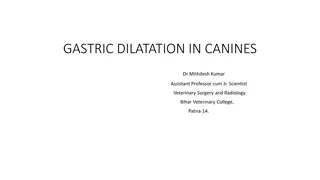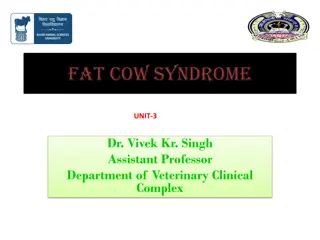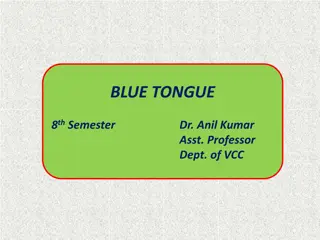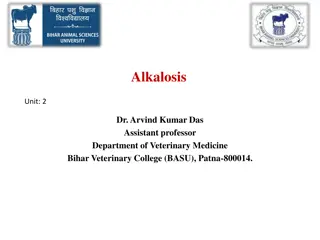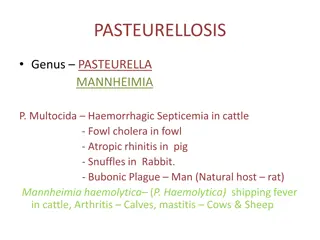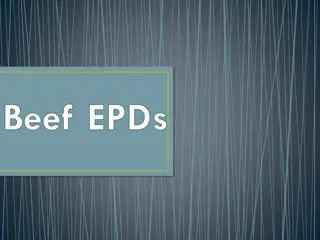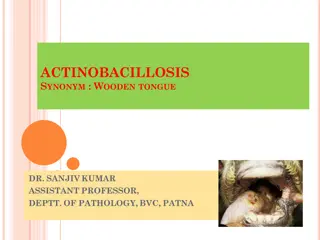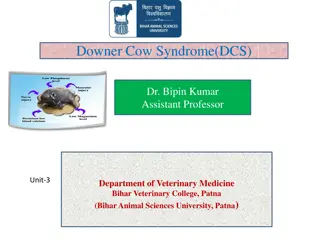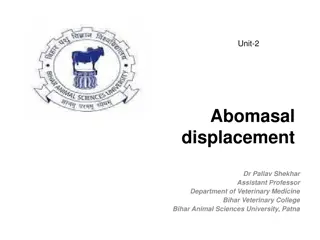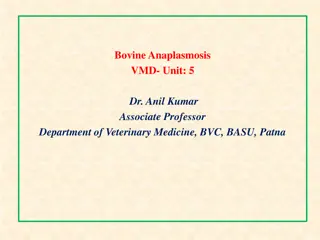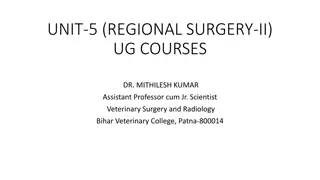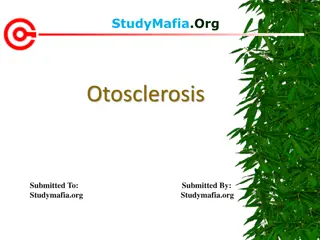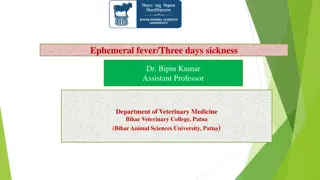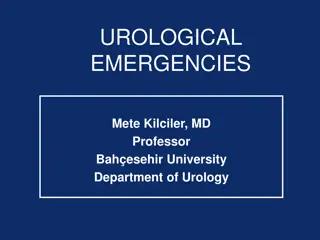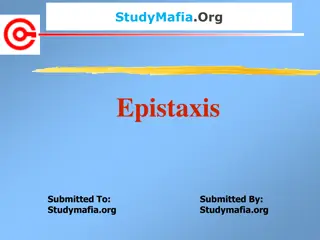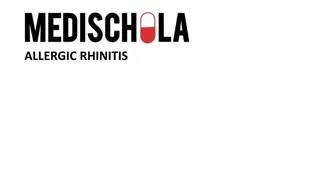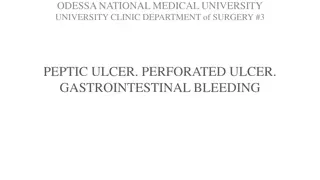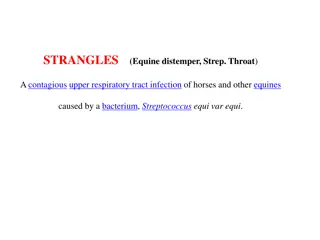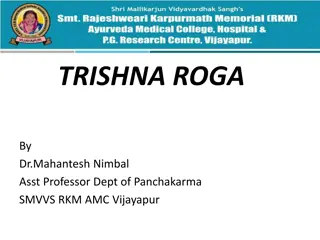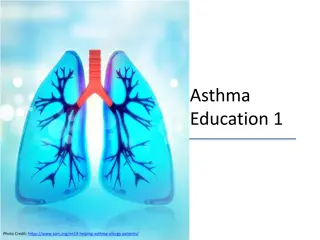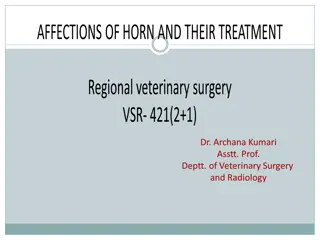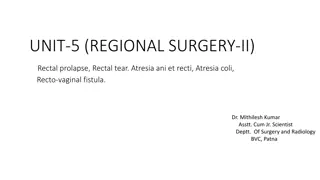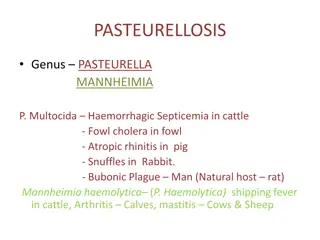Understanding Bloat in Cattle: Causes, Symptoms, and Treatment
Bloat in cattle, characterized by overdistension of the rumenoreticulum with gases of fermentation, can be caused by various factors including diet, obstruction, or diseases. Frothy bloat and free gas bloat are common types, each with its own triggers and symptoms. Diagnosis involves a thorough history and physical examination, with treatment options including passage of an oro-gastric tube and administration of oils to reduce foam surface tension. Severe cases may require emergency rumenotomy. Understanding the etiology and clinical signs of bloat is crucial for effective management in cattle.
Download Presentation

Please find below an Image/Link to download the presentation.
The content on the website is provided AS IS for your information and personal use only. It may not be sold, licensed, or shared on other websites without obtaining consent from the author. Download presentation by click this link. If you encounter any issues during the download, it is possible that the publisher has removed the file from their server.
E N D
Presentation Transcript
BLOAT Dr. Anil Kumar 4th Professional (VCP-II) Asst. Professor Dept. of VCC
BLOAT Overdistension of the rumenoreticulum with the gases of fermentation Either in the form of a persistent foam mixed with the ruminal contents primary or frothy bloat In the form of free-gas separated from the ingesta secondary or free-gas bloat. Etiology: Common in Cattle than other ruminants Frothy bloat is associated with legume consumption(e.g., alfalfa, clover). Thin leaf structure of certain varieties of legumes coupled with tender growth (early or late season) allows for more rapid bacterial degradation and intraruminal particle suspension. Chloroplast released from monomolecular foams that trap gas bubbles. These foams have great surface tension and are highly stable. the legume leaf forms
Small gas bubbles do not coalesce, the cardia or the forestomach cannot be cleared of this foam, and the animal is unable to eructate Feedlot Bloat: cattle can also develop frothy bloat when more than 50% of their ration is being consumed as concentrate. A mucoprotein slime stabilizes the foam. This foam is stable at a low pH created by lactate and VFA production. Salivation is decreased because of the fine grind of the diet, which also lessens intraruminal buffering. Free gas bloat: is associated with a history of feeding whole or only partially chopped solid feeds (e.g., potatoes, apples, turnips). Esophageal obstruction caused by a foreign body, stenosis, or pressure from enlargement outside the esophagus, acute onset of ruminal atony due to anaphylaxis, grain overload and hypocalcemia
Hypoderma lineaturn reactions Cervical neoplasia Certain postures or diseases( Examples include milk fever and tetanus). Vagal indigestion--Moderate free gas bloat Clinical Signs: Distension of the left flank Protrusion of the paralumbar fossa above the ventral column and enlarged abdomen Dyspnea and grunting Mouth breathing, protrusion of the tongue, and extension of the head, and occasionally vomition.
Diagnostic plan: An accurate history The passage of an oro-gastric tube A reading of the foam Ph further defines the type of frothy bloat; a feedlot bloat should have a pH of less than 5.5. Treatment: With frothy bloat, pass an oro-gastric tube and administer an oil to reduce the surface tension of the foam and allow the gas bubbles to coalesce. Either mineral oil at 1L/100 kg orally or Dioctyl sodium sulfosuccinate (DSS) in peanut oil at 17-66 mg/kg orally may be used (150-600 ml/450 kg animal). The treatment should be satisfactory and sufficient if the animal is still standing and not showing evidence of respiratory or cardiac failure. If the animal is in a deteriorating clinical condition, an emergency rumenotomy is warranted.



